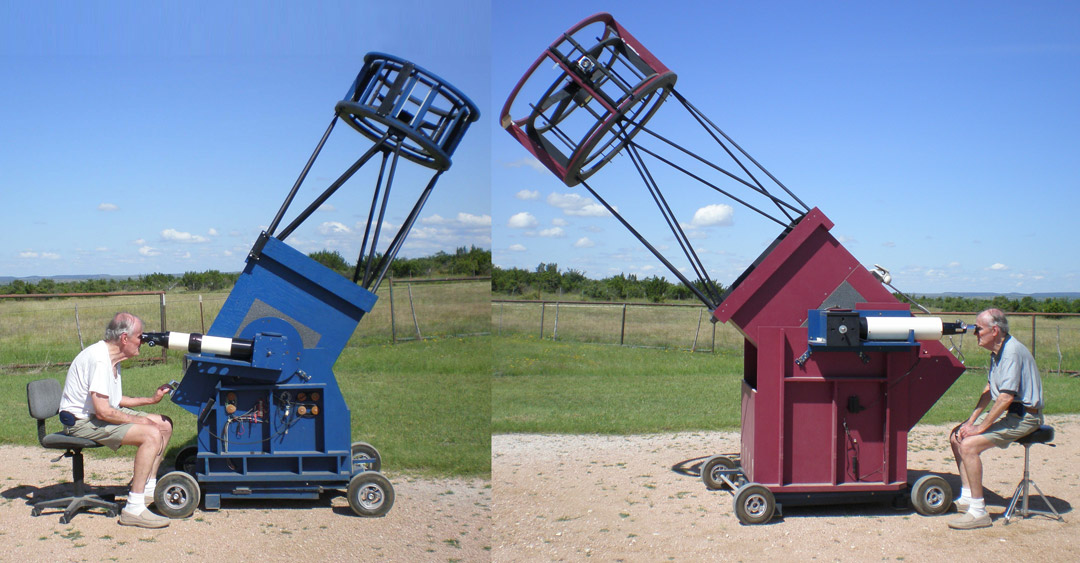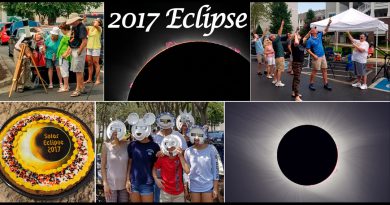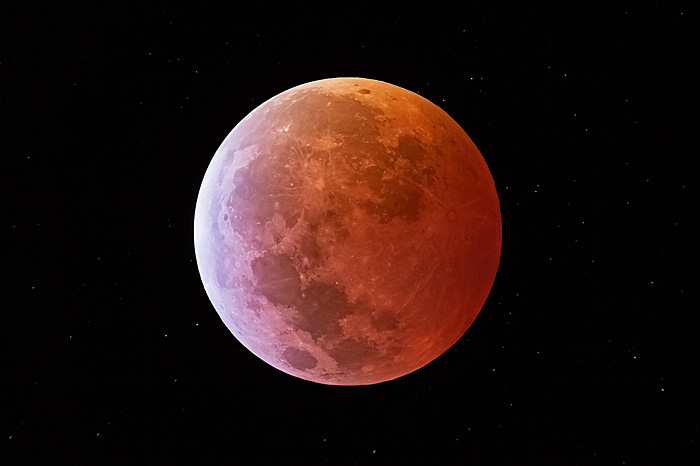2017 Eclipse — the View of a Lifetime! (with the TV-NP101)
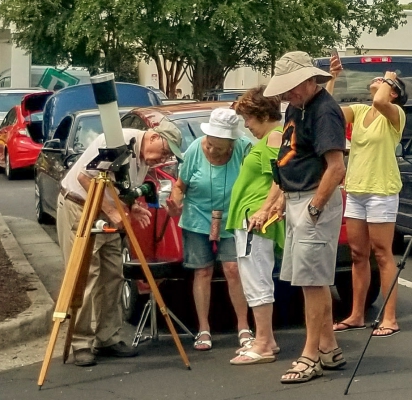
Tele Vue telescopes spread out along the center-line of the Monday, August 21, 2017 North American Eclipse. Our employees and friends report on their eclipse experiences. Our second report is from Al Nagler’s totality trip to Columbia, SC.
A year ago, Judi (wife and Tele Vue co-founder 40 years ago) planned this eclipse trip, our 4th. I decided, agreeing with Neil deGrasse Tyson’s recommendation, to concentrate on the unforgettable visual experience of totality. Boy was he right!
We reserved rooms at the Hilton Embassy in Columbia, SC and drove there starting on Saturn-Day (pardon my passion for changing the name) August 19th, arriving on Sunday afternoon to meet-up with our good friends Gail and Matt Cowit to share the experience. I immediately found a good parking spot with my car trunk facing a large open area and nearby trees for shade benefit :-).
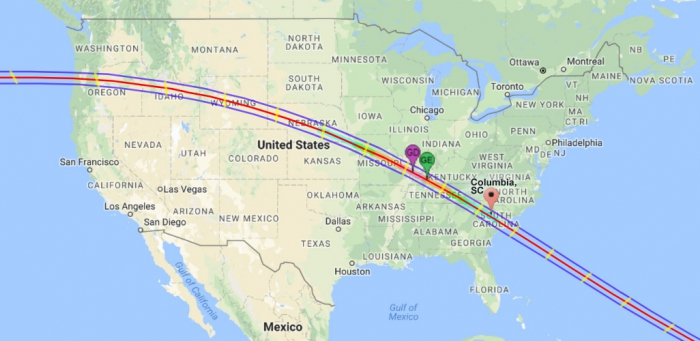
GE = Greatest Eclipse: Moon’s shadow center is closest to center of Earth.
GD = Greatest Duration: the longest totality.
Basemap credit: NASA/Google
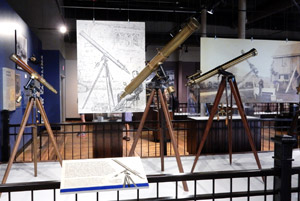
With a few hours to spare before dinner, we decided to visit the SCSM (South Carolina State Museum) which was an incredibly lucky find. Aside from a great planetarium, and large domed observatory (housing a 12-3/8” Alvan Clark refractor), I was stunned to see a 6,000- sq ft PERMANENT telescope exhibit filled with historic Alvan Clark, Dolland and Zeiss refractors (donated by amateur astronomer Robert B. Ariail), — the largest and finest exhibit of its type I’ve ever seen! — and that was just the start of a stunning personal experience: I casually joined a group of Girl Scouts on a lecture tour of the exhibits, after which I decided to converse with the lecture guide about the museum. When I told him my name, the guide (who was the museum’s director of education, Tom Falvey), said “OMG, we have several Nagler eyepieces! You HAVE to give a short talk to the Girl Scouts about your career.” (The group consisted of one Girl Scout selected from EVERY state to see the eclipse, tour the museum, and meet astronaut Charlie Duke on eclipse day, as part of a large public viewing party co-sponsored by NASA and JPL).
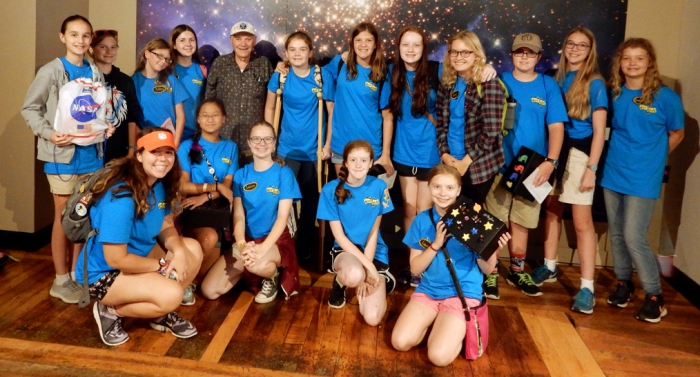
When the Girl Scouts swarmed over me to autograph their notebooks, teary-eyed, I obliged with “Al Nagler 10715” (Google it).
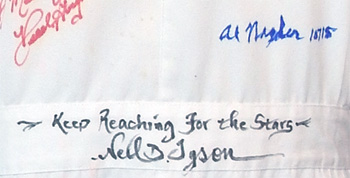
I then toured the special Charles Duke exhibit room, and met with Tom Falvey to autograph his “celebrity jacket” — honored to sign it near Neil deGrasse Tyson’s autograph :-).
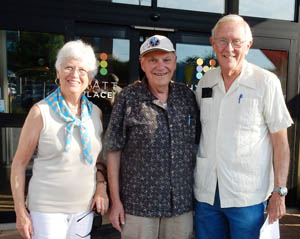
Well, what could be more fun so far for me? Yes, there’s more! Tom happily consented to my joining him as we drove to pick up Charlie Duke and his wife Dottie to drop them off at their hotel. (I knew I would not have time to see him on eclipse day). What a charming, gracious couple! Duke even admitted that the LEM visual simulator optics I designed 50-years ago worked nicely :-).
Is it possible to top a day like that, I thought? Possibly, if all the predictions of clouds and rain for tomorrow’s eclipse were wrong!
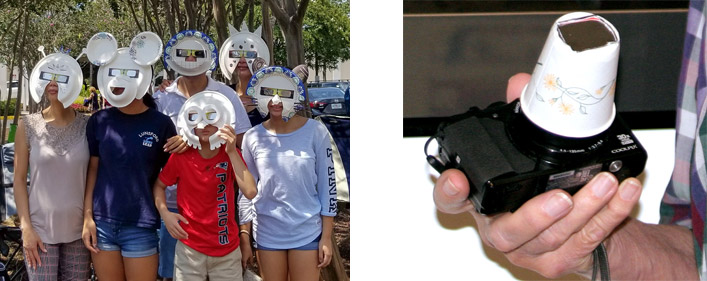
Right: Al’s low-cost solar filter for camera made with paper cup and paper solar glasses.
Monday morning, I set up and checked out the Tele Vue-NP101 I brought along with a white light filter, Hydrogen-α DayStar set up, and my Nikon Coolpix pocket camera, for which I developed a low-cost filter — see image :-). Dodging clouds until first contact, I was ready. Then, while all the clouds magically disappeared (unfortunately friends just 20- and 50-miles away were not as lucky) crowds appeared in the parking lot to share the wonder of totality. Judi, Gail, Matt, and many fun families, shared the entire experience, especially totality, through my NP-101 with 17mm Ethos — giving 32x over a 3+-degree field.
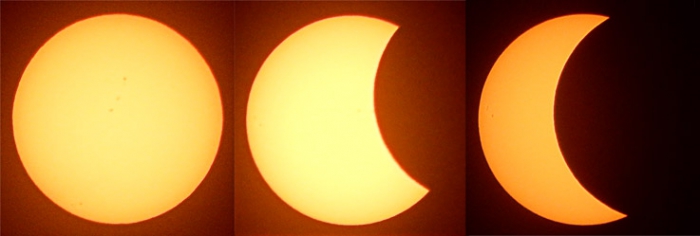
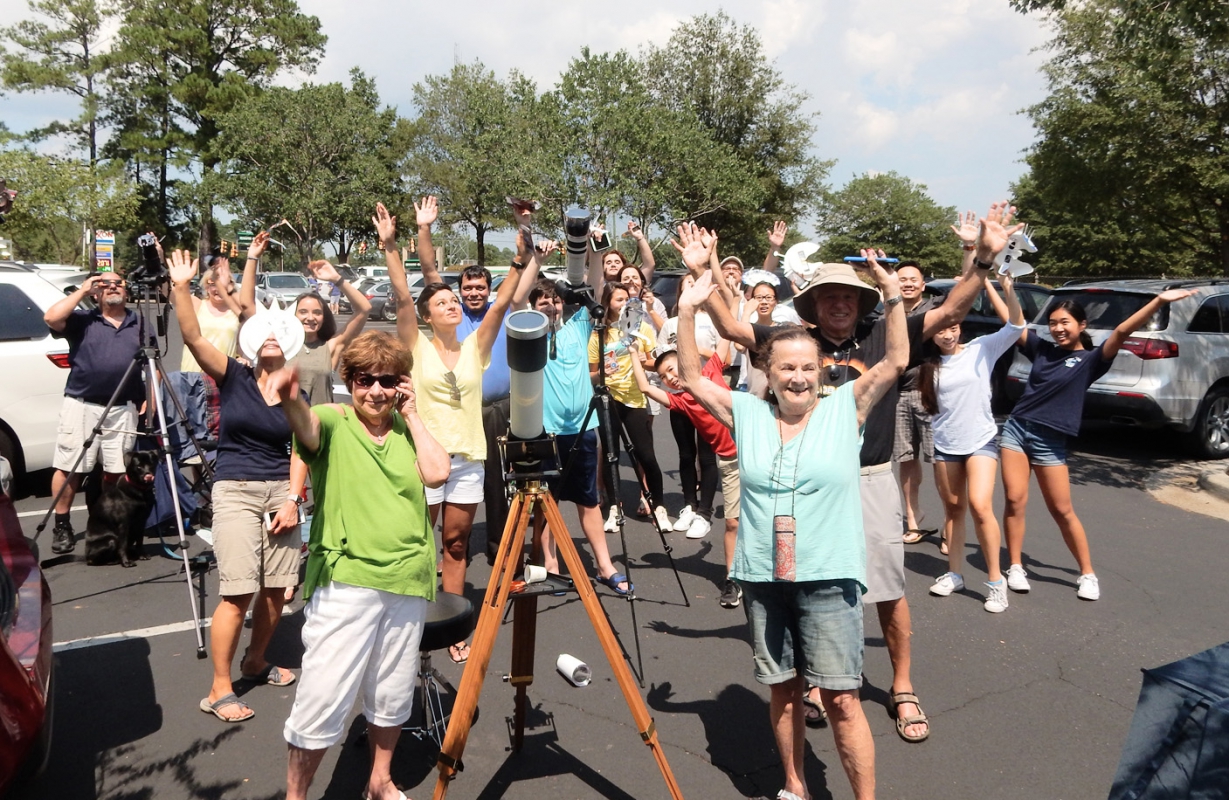
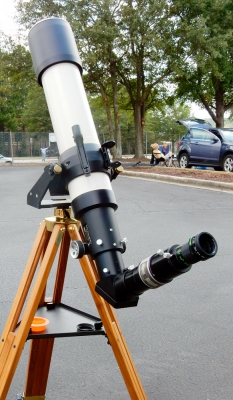
Seeing the gorgeous flaring corona around an absolutely black solar disc, with lovely pink prominences peeking around the edges, AND Regulus sparkling near the edge of the 100° (Apparent Field of View) eyepiece field, was indeed visual magic. While that memory can’t be erased, I’m glad to share the closest rival I’ve seen, the picture Sean Walker, Equipment Editor of Sky & Telescope, took with his 70mm Tele Vue Pronto with field flattener from Glendo, Wyoming — with his Canon 70D — for this 7-image composite.
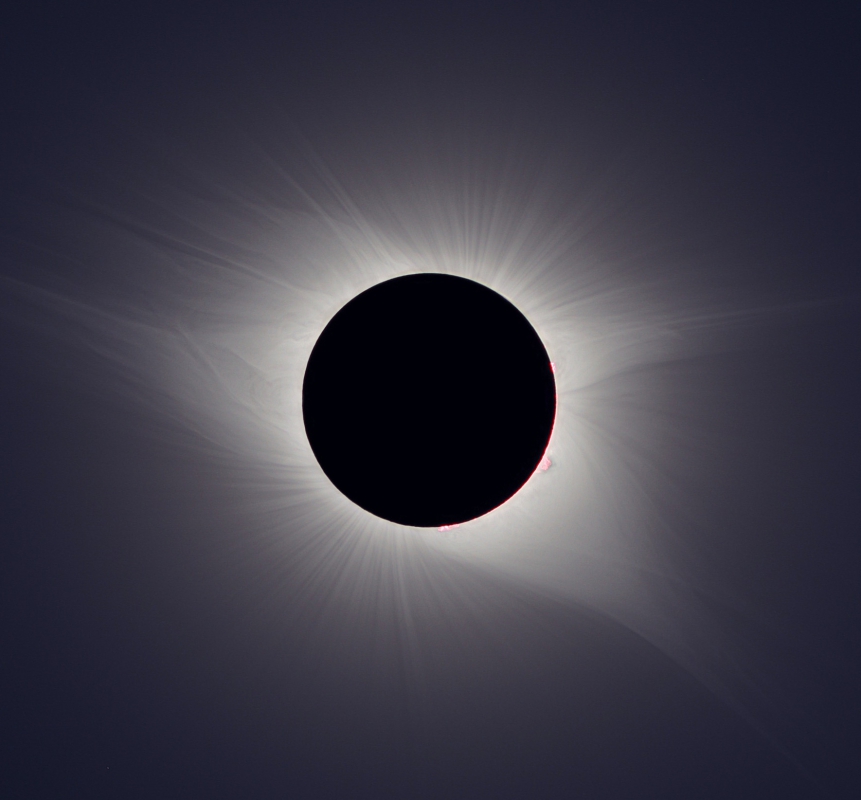
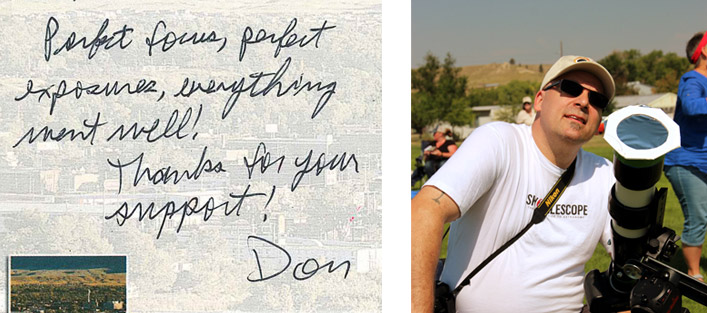
Right: Sean Walker with Tele Vue Pronto in Glendo, WY. Image by Peter Tyson.
Coming home and sharing eclipse images and experiences with David, Sandy, and Peter, and all my friends and relatives was indeed wonderful, but could anything top getting this postcard from Don Bruns, who has been working for 2-years for the chance to achieve 10x the accuracy of the 1919 Eclipse experiment that confirmed Einstein’s Relativity theory? See blog headline’s from March 21, 2017 “Tele Vue NP101is to Test Einstein’s General Relativity” and June 28, 2017 “Tele Vue TV-NP101is Relativity Experiment Update“. Stay tuned for Don’s final report.
- These and more images from Al’s SC totality in a flickr album.
- Tele Vue NP101is scope (mobile site). Note that the visual performance of the current TeleVue-NP101is is identical to that of Al’s Tele Vue-NP101.
- Tele Vue Ethos eyepieces (mobile site).
- Tele Vue FoneMate smartphone to Tele Vue eyepiece adapter (mobile site).
- Peter’s Totality in Tellico Plains, TN with Tele Vue TV-85 (8/30/17) blog post.
- 2017 Eclipse images made with Tele Vue producs on our Instagram account from us and friends.
- 2017 Eclipse images with Tele Vue products on Twitter.
- Our blog post Winter Star Party 2017: in the Eye of “Kermitis” reveals Al’s involvement with the LEM simulator that Charlie Duke used. There is also a blog post on TV news coverage of the LEM simulator restoration.



